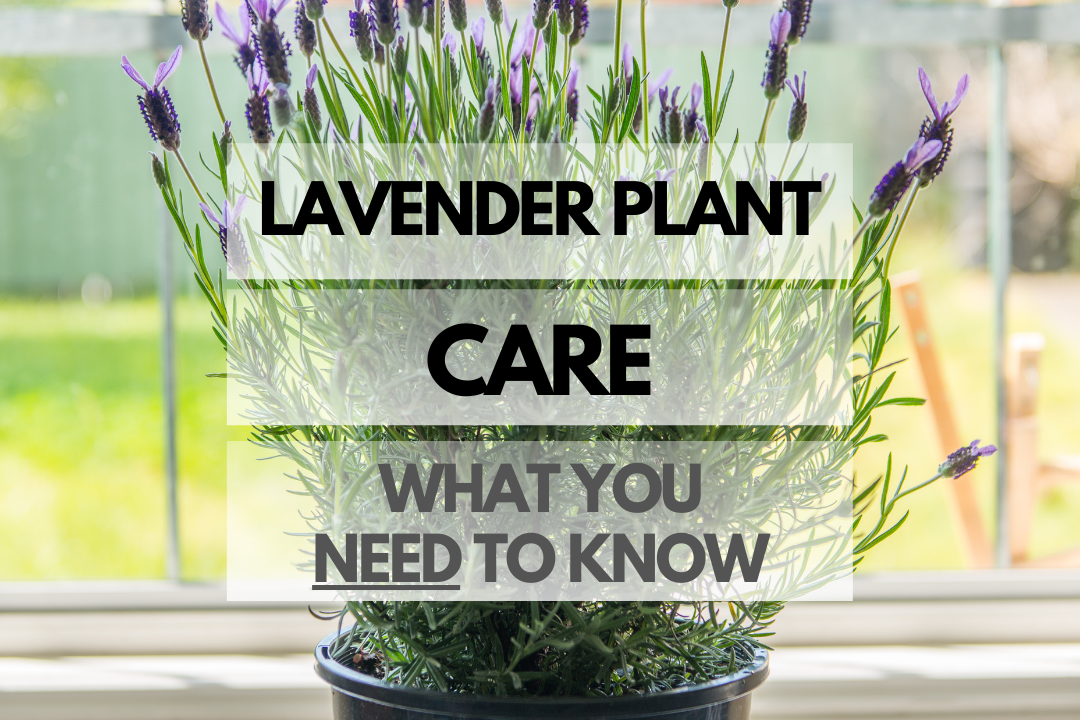Ready to bring some fragrant, calming vibes to your garden or home? Look no further! This Lavender Plant care guide is here to help you grow healthy, beautiful Lavender plants with ease. Let’s dive in!
Lavender Plant Care Guide
From sunlight requirements to pruning tips, this care guide will cover everything you need to know to keep your Lavender plants thriving.
Quick Reference Table: Caring for Lavender Plant
| Aspect | Requirement |
|---|---|
| Sunlight | Full Sun (6-8 hours/day) |
| Soil | Well-draining, slightly alkaline (pH 6.7-7.3) |
| Watering | Once/twice a week; allow soil to dry between waterings |
| Pruning | Annually, in early spring |
| Temperature | 50-80°F (10-27°C) |
Lavender Plant Sunlight: Do They Need It and How Much?
Lavender plants love the sun! They need at least 6 to 8 hours of full sunlight per day to grow and bloom properly. Make sure to place them in a location with plenty of direct sunlight, whether indoors or outdoors.
Lavender Plant Soil Tips
Lavender plants prefer well-draining, slightly alkaline soil with a pH between 6.7 and 7.3. You can use a soil mixture of equal parts coarse sand, peat moss, and perlite for optimal drainage and nutrients. Adding lime to the soil can help increase the pH if needed.
Lavender Plant Watering and Frequency
Water your Lavender plants once or twice a week, allowing the soil to dry out between waterings. Overwatering can lead to root rot, so it’s important to monitor the soil moisture to prevent this issue.
Pruning Lavender Plant Properly
Pruning your Lavender plants annually in early spring will promote bushier growth and more flowers. Remove any dead or damaged growth and shape the plant to your desired size.
Optimal Lavender Plant Temperature: Can They Tolerate the Cold?
Lavender plants grow best in temperatures between 50 and 80°F (10 and 27°C). While some varieties can withstand colder temperatures, it’s best to protect the plants from frost and extreme cold to ensure their survival.
Common Lavender Plant Problems
Root Rot
Caused by overwatering, root rot can be avoided by allowing the soil to dry out between waterings and providing well-draining soil.
Gray Mold
Gray mold, or botrytis, thrives in damp conditions. Ensure proper air circulation around your Lavender plants and avoid overhead watering to prevent this issue.
Whiteflies and Aphids
Whiteflies and aphids can be managed by regularly inspecting your plants and using insecticidal soap or neem oil as needed.
Lavender Plant Outdoors vs Indoors
Lavender plants can be grown both indoors and outdoors. Here are the pros and cons of each:
| Location | Pros | Cons |
|---|---|---|
| Outdoors |
|
|
| Indoors |
|
|
Best Pots for Lavender Plant
When choosing a pot for your Lavender plant, opt for containers made of terra cotta, clay, or unglazed ceramic. These materials help regulate moisture and prevent overwatering. Ensure the pot has drainage holes and is large enough to accommodate the plant’s root system.
Lavender Plant Facts
Lavender Plant Benefits
Lavender plants offer several benefits, including:
- Aromatherapy: The calming scent of lavender is known to help relieve stress and promote relaxation.
- Pollinator attraction: Lavender flowers attract bees and other pollinators, which can help improve the overall health of your garden.
- Culinary uses: Lavender can be used in various recipes, such as teas, desserts, and savory dishes.
- Insect repellent: The scent of lavender can deter mosquitoes and other pests from your outdoor space.
Growth Rates: How Fast Do They Grow?
Lavender plants grow at a moderate pace, typically reaching their full size in 2 to 3 years. They can grow up to 3 feet tall and 3 feet wide, depending on the variety.
Lavender Plant Lifespan
With proper care, lavender plants can live for up to 10 years or longer. Regular pruning and maintaining good growing conditions can help extend their lifespan.
Are Lavender Plants Safe?
Lavender plants are generally considered safe for humans and pets. However, some people may have an allergic reaction to their scent or the oils they produce. It’s best to keep lavender plants out of reach of small children, as ingesting large amounts can cause digestive upset.
Lavender Plant Flowers
Lavender plants produce beautiful, fragrant flowers that range in color from pale purple to deep blue-purple. The flowers appear in spikes and bloom from late spring to early summer, attracting pollinators such as bees and butterflies.
Lavender Plant Types and Varieties
English Lavender (Lavandula angustifolia)
English Lavender is the most common variety, known for its sweet scent and dark purple flowers. It’s often used for culinary purposes and in essential oil production.
Lavandin (Lavandula x intermedia)
Lavandin is a hybrid between English Lavender and Portuguese Lavender. It has longer flower spikes and a more potent scent, making it popular for use in potpourri and sachets.
French Lavender (Lavandula dentata)
French Lavender is characterized by its serrated leaves and pale purple, tufted flowers. It’s often grown as an ornamental plant and is less cold-hardy than other varieties.
Spanish Lavender (Lavandula stoechas)
Spanish Lavender features unique, pineapple-shaped flower heads with small, dark purple flowers and showy, sterile bracts. It’s commonly used for ornamental purposes and has a distinct, camphor-like scent.
Lavender Plant Pros and Cons
| Pros | Cons |
|---|---|
|
|
Lavender Plant Cost
The cost of a lavender plant can vary depending on the size, variety, and source. On average, expect to spend around $5 to $15 for a small lavender plant. Larger, more mature plants may cost more.
Where to Buy Lavender Plant
You can purchase lavender plants from local nurseries, garden centers, or online retailers. Some popular online sources include The Home Depot, Lowe’s, and Etsy. Be sure to choose a reputable seller to ensure you receive a healthy plant.
Is Lavender Plant Propagation in Water Possible?
Yes, lavender plant propagation in water is possible, although it can be more challenging than propagating in soil. To propagate in water, take a healthy cutting from a non-flowering stem, remove the lower leaves, and place the cutting in a container with fresh water. Change the water every few days and wait for roots to develop before transplanting to soil.
Additional Resources
- Lavender World – An online community dedicated to all things lavender.
- Lavender Lovers Facebook Group – A Facebook group for sharing tips, advice, and photos of lavender plants.
- National Gardening Association: Lavenders – A comprehensive guide to lavender varieties and care.
- The Complete Book of Lavender – A book covering lavender history, uses, and cultivation.
FAQ for Lavender Plant Care
Are Lavender plants toxic to cats?
Lavender plants are generally considered safe for cats, but ingesting large amounts may cause digestive upset. It’s best to keep lavender plants away from pets that may chew on them.
Are Lavender plants toxic to dogs?
Lavender plants are not considered toxic to dogs, but they may experience digestive upset if they consume large amounts. Keep the plants out of reach to prevent any issues.
Are Lavender plants toxic to kids?
While lavender plants are not considered toxic to children, ingesting large amounts can cause digestive upset. Teach children not to eat plants and keep them out of reach if necessary.
How tall do Lavender plants get?
Lavender plants can grow up to 3 feet tall and 3 feet wide, depending on the variety.
Can Lavender plants live outside?
Yes, lavender plants can live outside and thrive in full sun and well-draining soil. They are typically grown as perennial plants in USDA hardiness zones 5 to 9.
Are Lavender plants poisonous?
Lavender plants are not considered poisonous, but some people may have an allergic reaction to their scent or the oils they produce. Always exercise caution when handling plants if you have sensitive skin or a history of allergies.

